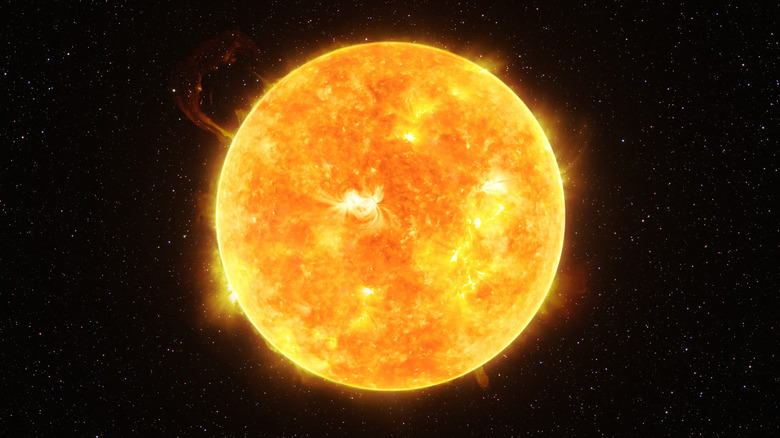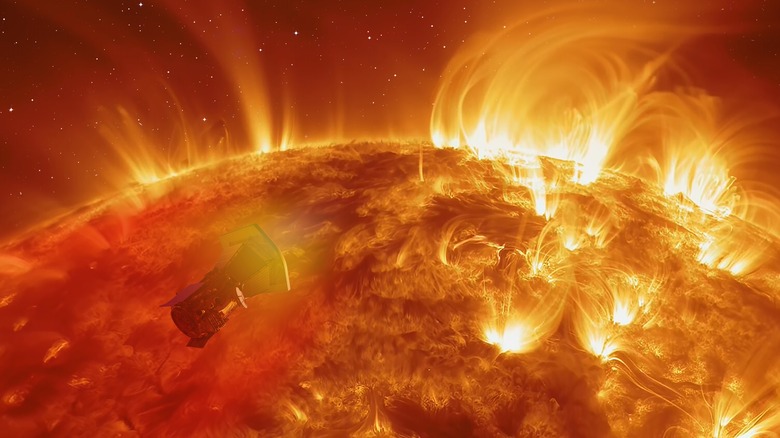Humans Can Actually Get Relatively Close To The Sun
The sun is a burning hot ball of gases with nuclear explosions constantly going off inside of it. This makes the sun very, very hot. On its surface, this sphere of nuclear reactions is around 10,000 degrees Fahrenheit. Inside, the sun is even hotter, with temperatures up to 27 million degrees Farenheit (via NASA). This makes it impossible for anyone to touch the sun, let alone get near it. But, how close could a person get to the sun before burning up?
It turns out that, thanks to technology, humans can actually get relatively close to our nearest star. According to NASA engineer Ralph McNutt, who worked on NASA's Messenger probe's heat shielding, a standard spacesuit can keep an astronaut protected until the heat reaches around 248 degrees Fahrenheit. If an astronaut were protected by a spacesuit and drifting towards the sun, they could get as close as 3 million miles away from the sun before it got too hot for the spacesuit to protect them (via Popular Science). While this may seem far away, it is actually extremely close to the sun compared to the size of space. Earth is around 93 million miles from the sun, meaning that an astronaut managing to get that close would be most of the way there. However, staying alive after reaching this point is not as simple as it sounds.
Cosmic radiation would kill quicker than the heat
While a standard spacesuit may be able to protect an astronaut from the heat of the sun, burning up is not the only issue an astronaut would have to face. Before an astronaut could even reach the point at which it would be too hot to survive, they would be exposed to such intense radiation from space that even getting to just the halfway point between Earth and the sun could prove to be impossible, as Popular Science writes. However, having the right spaceship could help astronauts get closer to the sun without suffering from the effects of radiation.
Eric Christian, a research scientist for NASA, believes it may be possible to eventually design a spacecraft that could safely take human astronauts as close as 4 million miles away from the sun. This spacecraft would have to be able to protect them from the radiation and heat, but would allow the astronauts to return to Earth (via Live Science). While this could be an interesting experience for the astronauts, remote-controlled probes may be a safer way to explore the sun.
NASA's Parker Solar Probe has been able to touch the Sun
While humans may not be visiting the sun up close any time soon, remote-controlled probes may allow us to study it as if we were there. NASA's Parker Solar Probe, launched in 2018, has a custom-made heat shield designed to protect it from more heat and radiation (via NASA). This probe is designed to collect data as it completes 24 close flybys of the sun.
In February 2022, Parker Solar Probe entered the sun's corona, or atmosphere, for the first time on its 11th flyby, as Space reports. This made the probe the first to officially "touch the sun" and marked an impressive moment in the history of science and technology (via EarthSky). Parker Solar Probe will continue to make measurements and fly even closer to the sun during the rest of its mission, allowing scientists at NASA to find new information on the sun and its weather from the safety of Earth.


